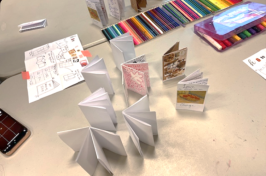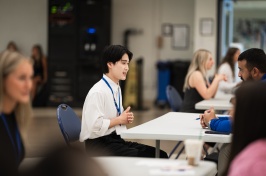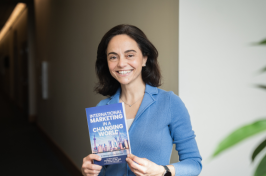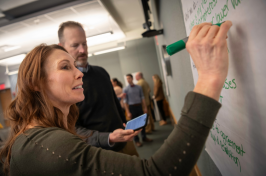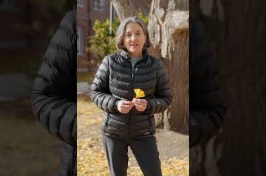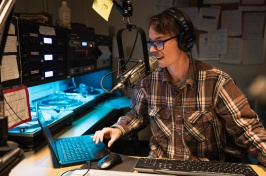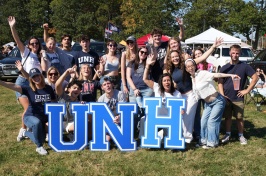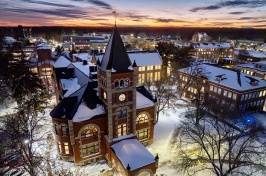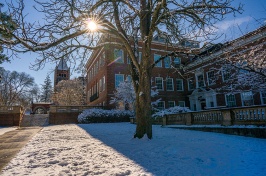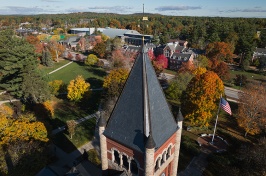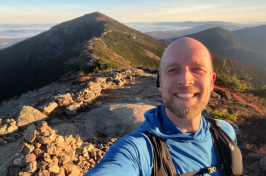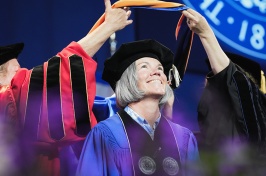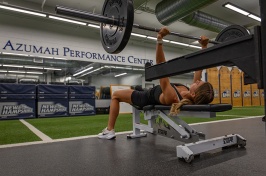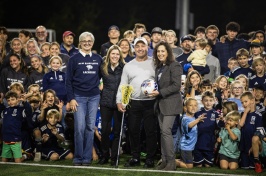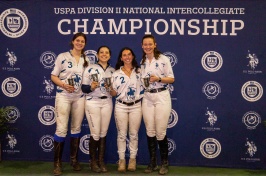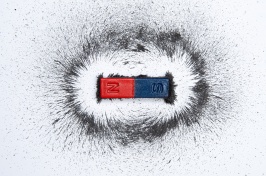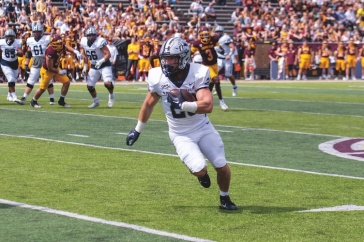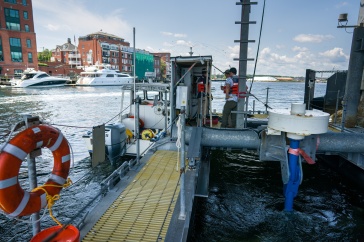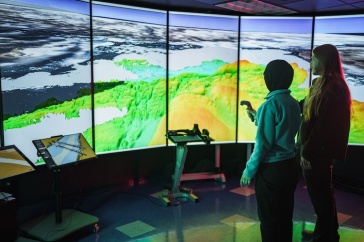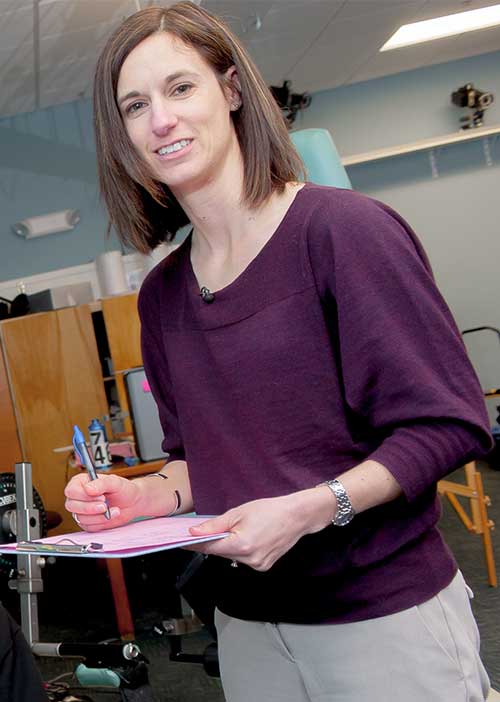
At the heart of exercise scientist Summer Cook’s research lies a deceptively simple question: What causes people to get stronger? But between her and the answer is a lab full of complex equipment, some data analysis wizardry and a cuff so tight it restricts blood flow.
“I study resistance training and neuromuscular function, specifically neuromuscular adaptations to training,” says the assistant professor of kinesiology. And, according to the American College of Sports Medicine (ACSM), she does it very well. The professional association just honored Cook with its Young Investigators award.
Cook’s primary research, funded by a grant from the National Institutes of Health, focuses on building leg strength in older adults — 65-plus — who are at risk of losing mobility and thus, independence because of injury or illness.
“We use our legs, in particular our quadriceps, for almost anything we do: to walk, to get out of a chair, to climb stairs,” says Cook of the large muscle group on the front of the thigh. Strong quadriceps are essential for independent living.
Researchers and even occasional visitors to the gym know that high-load resistance training — lifting heavy weights — will make muscles bigger and stronger. But for some older adults, those who have arthritis or are recovering from joint replacement, for instance, lifting heavy weights is not an option. So Cook is looking into the effectiveness of an alternative muscle-building method called low-load, blood-flow restricted exercise.
For the blood-flow restricted exercise, subjects lift very light weights while a cuff much like one used to take blood pressure restricts oxygen to the muscle. “There’s not enough oxygen to the working muscles so they fatigue faster,” says Cook, adding that the method has been shown to be effective in younger people.
Preliminary results, presented at the recent ACSM meeting in San Diego as part of Cook’s award, are positive: Study participants who did the blood-flow restricted exercises built muscle mass and muscle strength at the same rate as those who lifted heavy weights, and all subjects tolerated the blood-flow restriction.
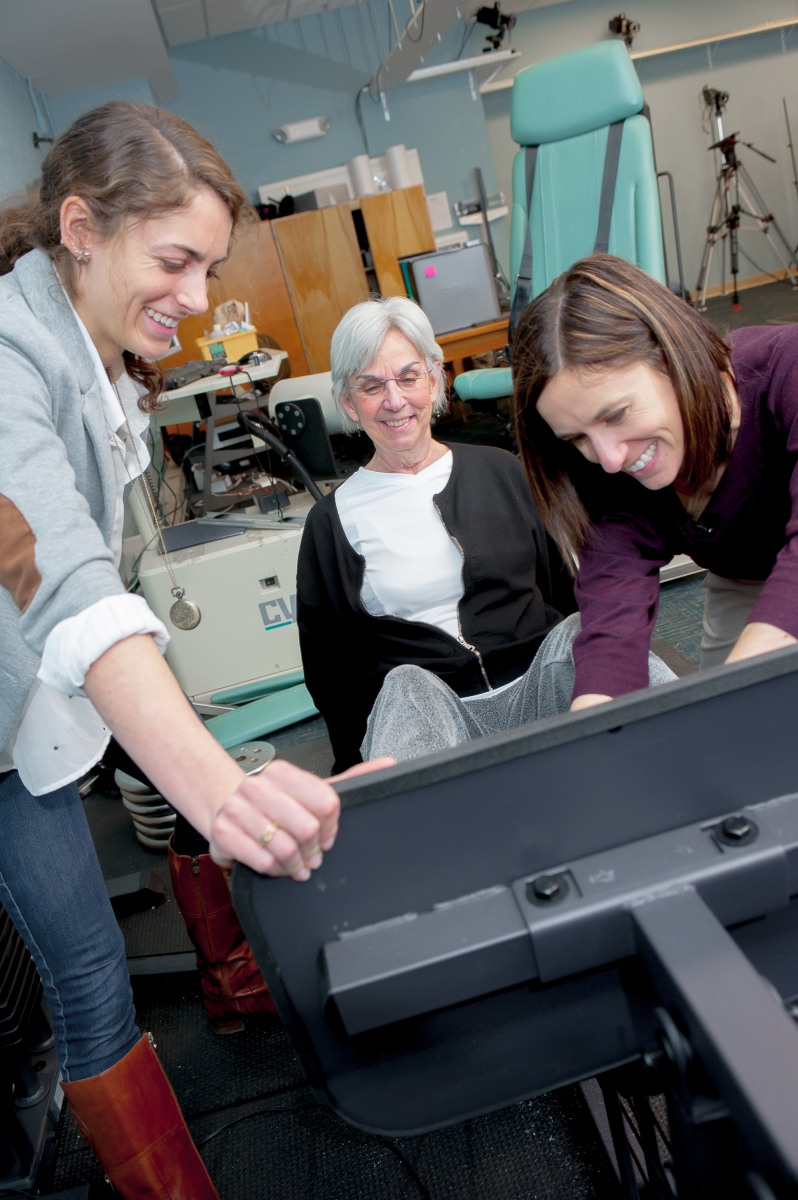
Cook is continuing to explore this innovative strength-building regimen, widely used in Japan but still novel in the U.S., in older adults and women of all ages. “This could be a viable alternative to high-load training; it could get someone through a short time period after an injury until they can get back into traditional training,” she says. “It’s not widely used here, but that’s why we’re researching it.” And as baby boomers age and live longer, understanding how to keep older adults strong and independent is a growing field. “There’s always more to study,” she says.
Outside the lab, Cook takes a more organic approach to keeping her own quadriceps strong; she’s a dedicated — and very fast — distance runner. She posted her personal best marathon time in April when she crossed the finish line in Boston in just three hours, 16 minutes and 25 seconds, and she’s training for a 50-kilometer trail run.
Cook, whose competitive running in high school and college led her into exercise science, says she’s not her own lab rat. “I don’t keep track of my calories or my heart rate, and I don’t have training journals. All I want to know is how far I went and how fast I ran,” she says.
And while she’s unlikely to put her senior citizen research subjects on a marathon training plan, her miles on the pavement and the uninterrupted reflection they provide definitely affects her research. “I think running makes me a more productive scientist,” she says.
Read more about Cook's research.
-
Written By:
Beth Potier | UNH Marketing | beth.potier@unh.edu | 2-1566

